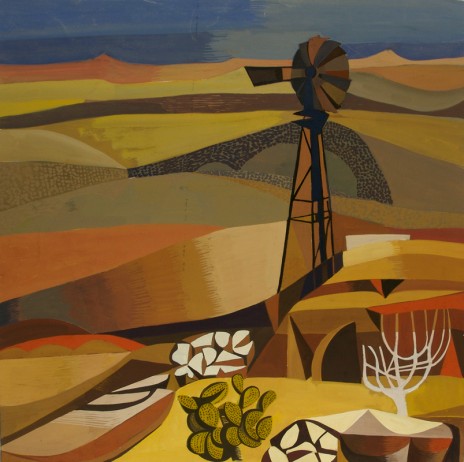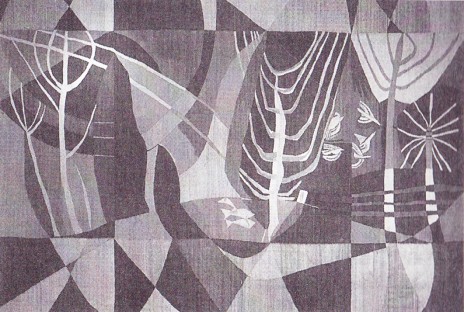‘The Skotnes tapestries provide a summary of his iconography and style. In them are the distinctive figures and mask-like heads, drought-stunted vegetation and panoramic views of veld, mountains and sky. Where most of them differ from his panels and woodcuts is in the adaptation of colour to suit a medium which is more lush and pliable than resistant wood.’ p56
‘In 1961 Coral Stephens, a weaver from Swaziland, saw a Skotnes panel at the Egon Guenther Gallery which she dearly wished to own. Skotnes said she could have it in exchange for a tapestry woven from the design. A delighted Coral proposed that her daugher, Marguerite, who had shortly before qualified as an occupational therapist, should undertake the task. This was the first tapestry Maguerite had ever attempted and it marked the first of many collaborative works with Cecil Skotnes as well as the beginning of an illustrious career as a tapestry weaver. … The largest Skotnes and Stephens venture was the hanging (427 x 340 cm) they made in the mid-sixties for the President Hotel in Johannesburg. This African landscape featuring rocks, succulents and spiky, stunted trees was hung behind a chest carved by Skotnes with angular, black figures. 68 Marguerite Stephens made many more tapestries from Skotnes designs. Several of them were created specifically to be woven, but frequently Stephens selected existent panels or woodcuts and translated them into wool.’ p54
Harmsen, F. Artist resolute. In Harmsen, F. (ed.). Cecil Skotnes. Cape Town: South African Breweries. 11–63.


